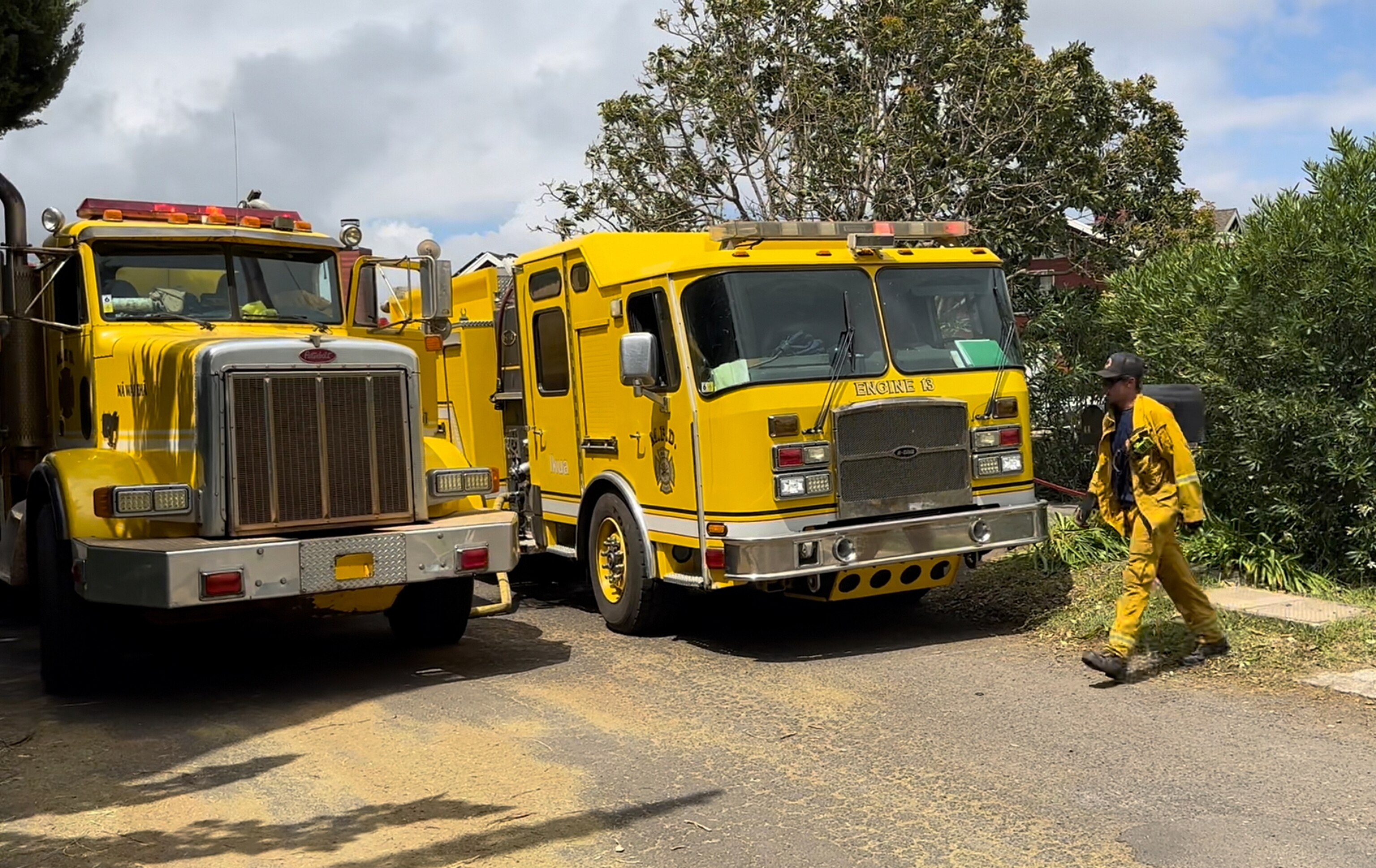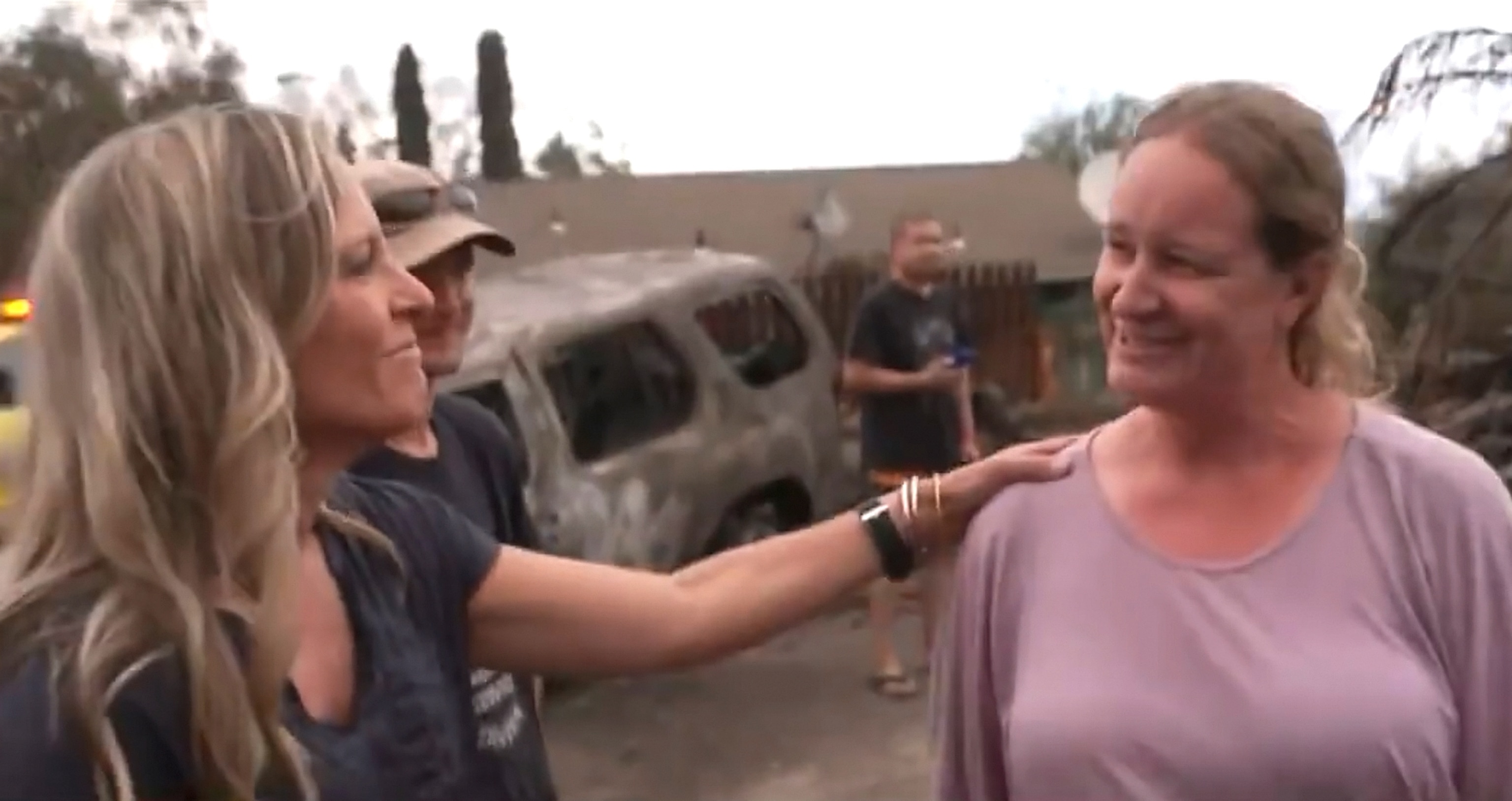Coming home to cover the devastation on Maui: Reporter's notebook
"It was like an inferno," one resident said.
It didn't hit me until I finally connected with my parents and mom said, "It's gone Beck. Lahaina is just gone." As I drove from one filming location to another, a choking sob forced me to pull over to the side of the road.
I grew up on Maui, went to school in Lahaina, and had just been home surfing off the harbor's breakwall a few months prior. I'd gleaned from an earlier text that my parents who live about 40 minutes away in Kihei were safe.
But the news I was reading didn't make sense: the town of Lahaina destroyed, what did that even mean?
Tuesday night, I'd heard from friends on Maui that crazy winds had fires popping up all over the island. Fires are not uncommon in Hawaii: the fire department would descend on a brush fire, sometimes it would burn for a while, but the humidity of the air and the lushness of the vegetation meant fires rarely got out of control.

But seeing early reports online and then talking to my mom, I knew this was different.
Just one text to my boss, Simone Swink, and 22 hours later my plane touched down in Kahului. The area surrounding the airport is called Central Maui; it is roughly equidistant from Kihei, Lahaina and the upcountry region of Kula.
By then, I had some understanding of the scope of the Lahaina devastation. The phrase I kept using was "I can't wrap my head around it." It was like a Rubik's Cube in my mind that I was incessantly rotating, trying to understand, "how does a whole town burn to the ground?"
I grabbed a rental car and drove out of the airport. To my left, on the slopes of the volcano Haleakala, I saw smoke billowing from about the 3,000-foot elevation level, very near my high school. I had heard that Lahaina was closed off by the Maui Police Department. Except for emergency responders, no vehicles were allowed to go in or out.
I called our Los Angeles Bureau chief, Bonnie McLean, and asked her the first of many tough questions: go right toward Lahaina and wait in the blockade or go left up the mountain and figure out what's happening there?

When the fires broke out, my colleague Gio Benitez had been vacationing on Maui. He leapt into action, trying to get info about Lahaina and interviewing evacuees at the roadblock point. He was all over that aspect of the story. Bonnie sent me upcountry.
Calling around to friends, I figured out there were multiple fires and sent my cameraman, local videographer Todd Perkins, towards the Olinda blaze on the northern side of the volcano. I went to a slightly higher elevation 20 minutes past Olinda where I heard homes had been destroyed.
Absent any reporting, I was just scouring for smoke, but a water tanker pulled out in front of me as I drove, and I followed it to the smoldering foundations of 8-9 houses that abutted a wide swath of charred and burnt forest.

At first, I just filmed and recorded people on my iPhone, but when Todd and I finally connected up, I was so happy to have him and a sound man because what I wanted most was to talk to people. I've never reported on a disaster before. But in my 25 years as a technology and consumer reporter, talking to people has always been my favorite part of the job.

The initial reporting from the Kula fire included a conversation with Ross Hart. He said in the midst of the crazy wind, he saw a tree fall, hit a power line and a spark started a fire. He fought the blaze with neighbors for hours and hours until the water ran out. I later heard about brigades of people fighting fires upcountry, some with no water, using cases of bottled water to squelch the flames. Never in my life would I have imagined a line of volunteers feeding bottles of Dasani to desperate homeowners trying to save their homes.
Down the road a few 100 yards, Miriam Loui's family lost one building in their family's small inn/restaurant. She said a brigade of total strangers came with water tanks and hoses to help protect the rest of their property. I learned later that was my friend, Ka'uhane Lu'uwai, and the Hawaiian Canoe Club. They had mobilized to protect the neighborhood which included his mom's house.
Lu'uwai described the scene in Kula saying, "It was like an inferno. I mean, winds gusting to 50 to 70 miles an hour, ambers were flying over the neighbors house and it just exploded. We were like what's going on- it was like out of the movie."
Back down the road across the street from Ross Hart were Sabrina and Andres Fehlman. Andres was sorting through the rubble of their home as his two children watched. I asked Sabrina what her husband was searching for, and she said their wedding rings.

Producers from LA arrived on the scene and the whirlwind of filing video and voiceovers for "World News" and "Nightline" kicked off.
An hour later, I circled back to check on the Fehlmans. "Any luck with the ring?" I asked. "We've found them" Sabrina said, showing me a charred simple band that was blackening her hand. "It doesn't look like much…" she trailed off. But Andres hugged her and said, "We're OK."

There were three, some say four separate fires across the island. Kula is 35 miles from Lahaina and another big fire broke out in between the two areas threatening the town of Kihei where my parents live. The next seven days were a complete blur as I tried to find stories from them all. I haven't yet pieced together what happened on what day because I slept in three-hour pockets, living out of my rental car as I shuttled between my Aunty Brooke's house in Kula and my parents' house 45 minutes away.
I drank water nonstop; the heat and the smoke making me feel thirstier than I've ever been in my life. I ate the emergency beef jerky in my backpack, because I knew I had to stay fueled. I was never hungry. Devastation diet I've heard it called: when your heart is so heavy that food is the last thing on your mind.
So many feelings are coming up -- sadness and loss. The stories I've heard from all the people displaced from Lahaina are more than I can write about at this time.
But my first day on the island and some of the stories from Kula are still emotionally accessible to me. I hope those stories help shine a light on all of the stories from these Maui fires.
As a Mauian, covering this tragedy has been challenging, but I am filled with purpose to tell stories with honesty and aloha about our amazing, resilient community.




